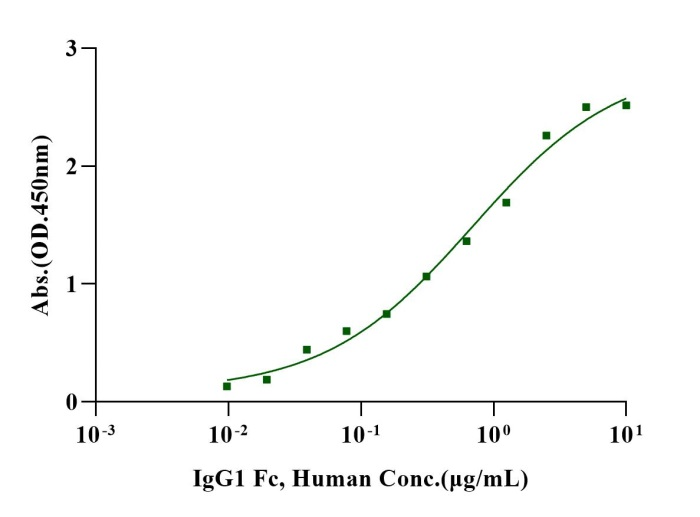40-45kDa (Reducing)
Reconstitute at 0.1-1 mg/ml according to the size in ultrapure water after rapid centrifugation.
1. Nimmerjahn, F. and J.V. Ravetch: Fcgamma receptors: old friends and new family members , Immunity Jan;24(1):19-28(2006). 2. Ravetch, J.V. and B. Perussia : Alternative membrane forms of Fc gamma RIII(CD16) on human natural killer cells and neutrophils. Cell type-specific expression of two genes that differ in single nucleotide substitutions , J. Exp. Med. 170:481(1989).
Fc gamma RIIIa is a low/intermediate affinity receptor for polyvalent immune-complexed IgG. It is involved in phagocytosis, secretion of enzymes and inflammatory mediators, antibody-dependent cytotoxicity and clearance of immune complexes. In humans, it is a 50-70 kDa type I transmembrane activating receptor expressed by NK cells, T cells, monocytes, and macrophages. A single nucleotide polymorphism creates high binding (V176) and low binding (F176) forms that, when homozygous, may influence susceptibility to autoimmune diseases or response to therapeutic IgG antibodies. Aberrant expression or mutations of CD16a is implicated in susceptibility to recurrent viral infections, systemic lupus erythematosus, and alloimmune neonatal neutropenia.
1μg (R: reducing condition, N: non-reducing condition).

Immobilized Biotinylated Fc γ RIIIa/CD16a(V176) Avi&His Tag Protein, Human (Cat. No. UA010763) at 2 μg/mL on Streptavidin precoated (0.5μg/well) plate, can bind IgG1 Fc Protein, Human (Cat. No. UA050001) with EC50 of 0.46-1.14μg/ml.